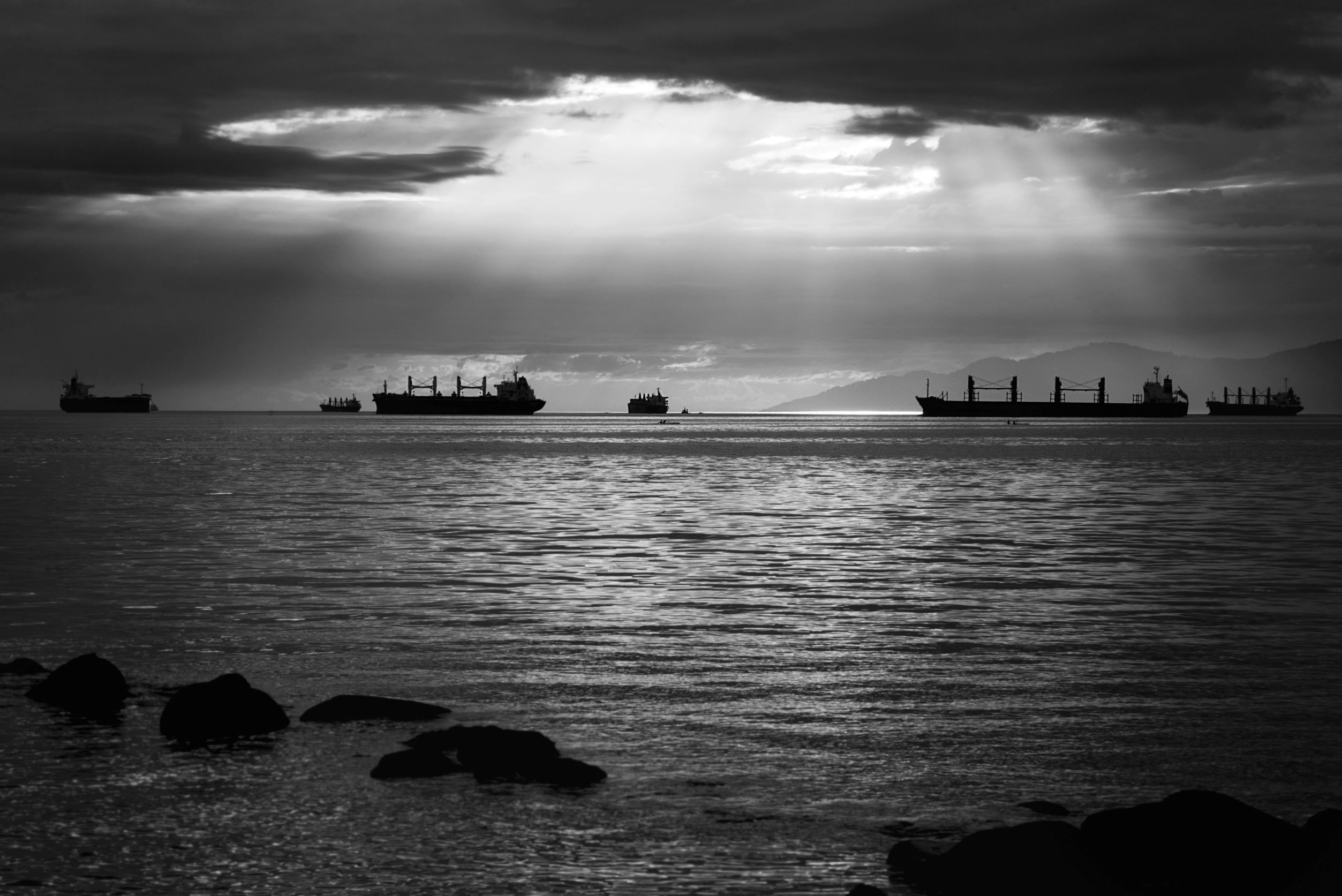In 2019, the federal government announced “minimum standards” for marine protected areas (MPAs) that prohibited dumping—but it has yet to define what falls under the ban. Now, a new WWF-Canada report shows at-risk species are still being endangered by harmful ship waste in protected waters, and identifies what must be done now to prevent this growing threat.
WWF-Canada’s unprecedented National Vessel Dumping Assessment found that ships operating in Canadian waters generate 147 billion litres of operational waste each year — the equivalent of 59,000 Olympic-sized swimming pools. Ten per cent of these dangerous wastes are generated in MPAs and marine refuges known as other effective area-based conservation measures (OECMs) intended to safeguard marine ecosystems and at-risk wildlife.
It also found that scrubber washwater from exhaust gas cleaning systems — which is up to 100,000 times more acidic than seawater— accounts for 97 percent of generated waste nationally, and almost all of it is released right back into the ocean, including in protected areas. Other harmful waste streams — greywater, bilge water, and sewage — may be stored for safer disposal, but it’s unclear how much is actually held by the ship and how much is dumped in MPAs.
Protected areas near Canada’s major ports and along merchant and passenger vessel routes in the St. Lawrence Seaway and off the B.C. and Nova Scotia coasts are most impacted by dumping, threatening whales, seabirds, fish, corals, crustaceans, and other wildlife. While there is currently less ship traffic in the Arctic, the proportion of waste generated in Arctic MPAs and OECMs is higher than on the east and west coasts.
The waste streams measured in the report collectively contain heavy metals, carcinogenic compounds, oils, microplastics, pathogens, nutrients, toxic chemicals and other pollutants that contribute to ocean dead zones, worsen ocean acidification and reduce the amount of carbon absorbed by oceans.
“The magnitude of waste dumped in MPAs revealed by this report makes clear why a comprehensive dumping ban is so urgently needed,” says Sigrid Kuehnemund, vice-president of wildlife and industry at WWF-Canada. “Canada’s marine conservation efforts should not just be measured by the size of the areas we protect but the strength of those protections. Current regulations simply don’t protect species and fragile ecosystems from ship-source pollution.”
The report’s top recommendation is for Canada to develop a comprehensive definition of “dumping” that prohibit ships from discharging all operational wastes in MPAs.
National vessel dumping assessment key findings:
Using data on 5,546 ships operating in Canadian waters with International Marine Organization (IMO) numbers in 2019, the report highlights four of the major operational waste streams that are created by ships, where waste is likely dumped, and by what types of vessels.
- Within protected areas, ships generate, and potentially dump, up to 14.7 billion litres of waste annually. This includes 14.5 billion litres of scrubber washwater, 233 million litres of greywater, 34.6 million litres of sewage and 5.2 million litres of bilge water.
- Cruise ships are the top producer of each of the four waste streams despite making up only 2 per cent of the ships in the analysis.
- Scott Islands marine National Wildlife Area off the north coast of Vancouver Island has more waste created and potentially dumped in it than any other protected area. This area is an important breeding and feeding habitat for millions of seabirds, including half of the world’s Cassin’s Auklets and 90 per cent of Canada’s tufted puffins, as well as steller sea lions, blue whales and other at-risk species.
- While the Arctic has less total shipping traffic, the proportion of waste generated in protected areas is 16 per cent compared to 8 per cent on the east coast and 11 per cent on the west coast. This will only increase as climate change makes it more accessible.













